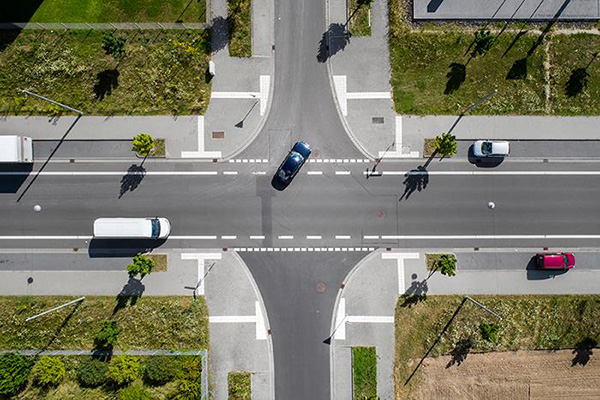A combination of high- and low-tech solutions can reduce fatalities on U.S. roads.
By Scott Schafer, Director, ITS Sales, Cubic Transportation Systems
Nationally, the nation is experiencing a crisis on its roadways with a steady rise in fatalities over more than a decade. One of the biggest contributing factors to this problem is that motorists and pedestrians are unpredictable. Investigating further, a study by the National Transportation Safety Board estimated that an average of 500 people die every year in wrong-way crashes in the U.S.
One obvious solution is to harden laws and penalties for impaired motorists. But we also must address causes of wrong-way crashes that don’t involve impaired driving, namely inexperienced or elderly motorists.
As more Americans age and remain active drivers into their later years, curbing wrong-way crashes and reducing highway risks will become a greater priority. To ensure that all can safely navigate American roadways, we need to consider the varied solutions that can effectively prevent accidents.

To combat driver impairment on the roads, some state and local transportation authorities have begun using alerting technologies to stop impaired drivers from making a mistake that could result in a wrong-way crash. Unfortunately, technology like flashing signs do have risks of false alarms. Some states are also using dynamic message signs, which would alert other drivers of the potential of a wrong-way driver on the road. This would heighten their awareness of the potential danger as they navigate that roadway or allow motorists time to choose an alternate route to avoid an accident.
There are also traffic management systems designed to efficiently move motorists through roadways and intersections while creating a safe distance between vehicles that could also be used to address wrong-way driving. For example, vehicle-to-vehicle, or V2V, technology uses onboard networking capabilities, sensors, radar, cameras and wireless communications to share data among nearby vehicles about traffic slowdowns, wrong-way drivers or sudden stops that might result in collision. V2I, or vehicle-to-infrastructure technology enables communication between vehicles and connected roadway infrastructure, such as traffic lights, digital road signs and other traffic management systems to alert drivers to a vehicle traveling the wrong way.
Even more robust, vehicle-to-everything, or V2X technology allows vehicles to transmit data to city traffic management systems as well as to pedestrians and bicyclists equipped with alerting apps on their smartphones. Besides alerting the public to wrong-way drivers, this data could include details like the length of red lights, the arrival time of buses and real-time problems on the roads like traffic congestion or issues caused by the weather, construction or popular local events. This technology has generated positive road safety results.
However, technology isn’t always the answer. Some of the most impressive solutions to wrong-way driving are actually quite low tech. A great example is an alerting system that uses yellow collapsible traffic bollards or poles that ease the flow of traffic at an intersection with high pedestrian fatalities, resulting in reduced incidents and fewer fatalities.
Other low-tech ideas for stopping wrong-way crashes include painting arrows on the asphalt, using spikes or barriers or installing lighted and flashing reflectors directly into the road. Essentially, any signal or message that gives people in poorly lit or competing light situations is going to be helpful.
At the end of the day, we don’t need to solve this problem in the same way for every town or every state. State and local agencies can select what works best in their area. While solving wrong-way driving is challenging, it’s encouraging that there are strong high-tech or low-tech solutions. If we can find solutions that reduce risks and get it right, the rewards are immeasurable.

Scott Schafer is an accomplished leader with over 14 years of experience managing teams. With a strong command of client acquisition, B2B development, solutions sales, product management, and infrastructure optimization, Scott brings a wealth of knowledge to his role at Cubic. As the Director of ITS Sales for GRIDSMART, an IT Services and Consulting firm acquired by Cubic Corporation in 2019, Scott is committed to providing traffic professionals with the most precise traffic data and top detection in the transportation industry. Prior to his current position, Scott served in a sales capacity at National Telecom Services.
In this episode, I sat down with Beejan Giga, Director | Partner and Caleb Emerson, Senior Results Manager at Carpedia International. We discussed the insights behind their recent Industry Today article, “Thinking Three Moves Ahead” and together we explored how manufacturers can plan more strategically, align with their suppliers, and build the operational discipline needed to support intentional, sustainable growth. It was a conversation packed with practical perspectives on navigating a fast-changing industry landscape.